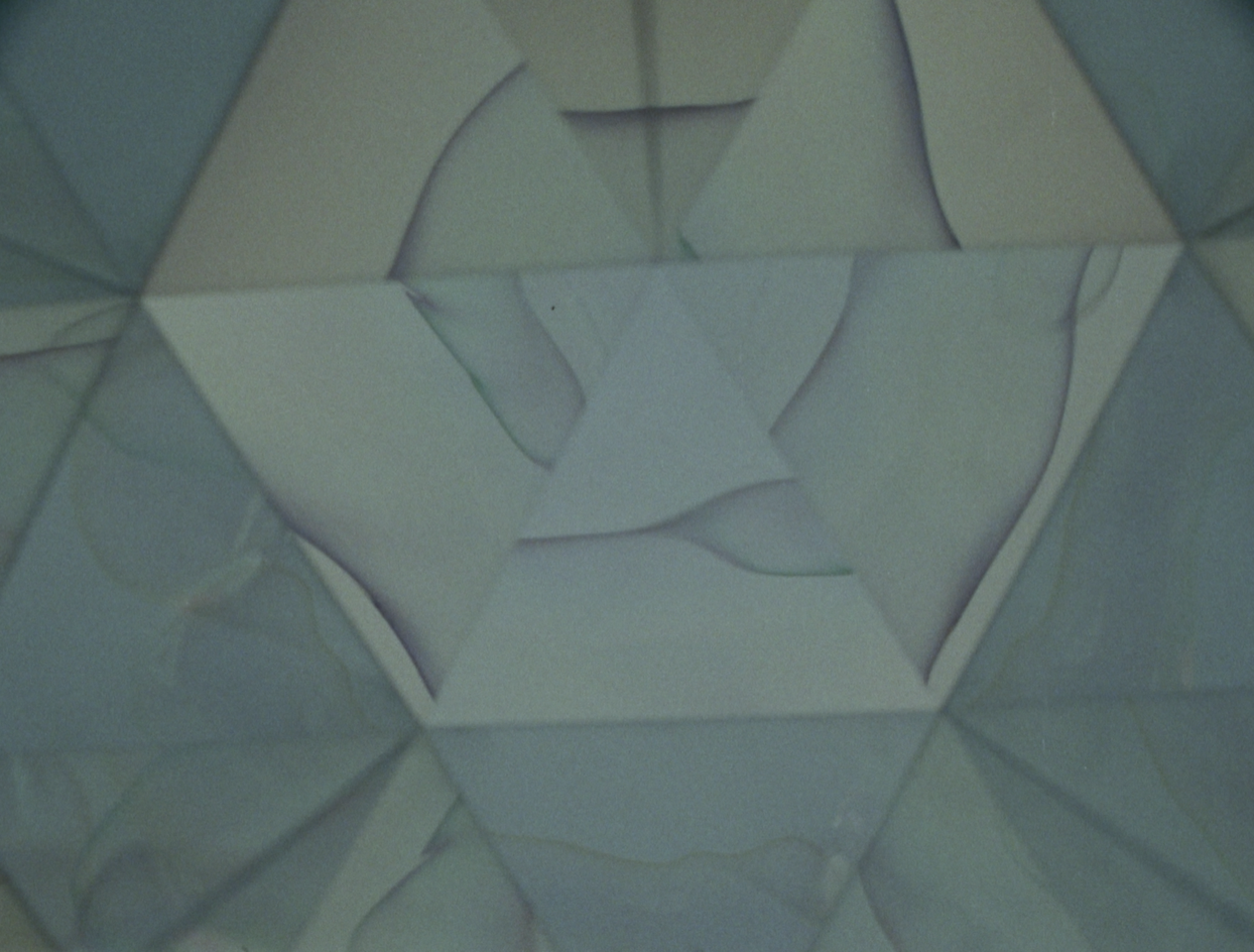Antonia De La Luz Kašik

Zyklop (1−7), 2022
with Andi Gruber, 16mm film, digitized, 7 min.
Film still
Courtesy the artist
In the work of filmmaker Antonia De La Luz Kašik the camera as a device plays a key role. She uses it to combine and interweave different image worlds, exploring the technical capacities of the analogue camera and film material. For Systems of Belief the artist has made a new film that is based on previous works, and which operates at the parameters of the medium of film.
Optical devices are attached to a 16mm film camera, operating between the camera and the world and transforming the filmed reality, as well as themselves becoming part of the image. This method stands firmly in the tradition of 1970s experimental film, which is major point of reference in this exhibition. For this work, De La Luz Kašik also draws on more recent technical opportunities. The objects in the room, which are shown in the film, should be seen as a further lens that is placed on the camera. They were 3D printed and then mirrors were affixed to them.
In their combination with the 16mm camera, this leads to kaleidoscopic visual worlds that reflect the gaze while making it abstract. The images that ensue are only to a certain degree plannable and controllable. It is possible to work out in advance how different mirrors might produce different reflections, but in their interplay with various objects the results cannot be predicted more precisely. They are only really clear when the analogue film has been developed. This means that the artist can only see the images at the editing stage of the film, and then use them as she wishes. She is not primarily concerned with narrative, but instead the potential relations between the different shots. The objects are not filmed because of the meanings that they are usually given, but rather with an interest in their form. Therefore the editing logic of the film is determined by parameters such as composition, movement, color, light, and rhythm. The internal logic of this method can be seen as a kind of system. The artist makes some intuitive decisions within the process of creating these images, but has also developed a formal idiom during her previous experience with the medium of film that can readily be seen within the various historical phases of experimental film. Like the pioneers of abstract film and later experimental film, Kašik develops her own way of influencing the camera image. While this was once done with painted gypsum boards, added apparatus, or interventions into the physical film material, Kašik uses mirrored 3D prints. The kaleidoscopic effect is an intended result of her experimental arrangements, giving the artist somewhat more artistic scope than her predecessors had. This is evident in a sketch she made when preparing the exhibition, showing thirty possible 3D print forms that are technically relatively easy to produce.
Various practices of abstract and experimental forms of filmmaking play a central role in the exhibition and enable new perspectives on our understanding of technology, perception and the world. Therefore, the HALLE FÜR KUNST Steiermark is pleased to have nominated Antonia De La Luz Kašik an artist for the Panther Residency—a juried support program for on behalf of a promising young local artist working in project-based art, who dedicates herself anew to the here addressed practices from a perspective of the present.
Zyklop (1 – 7), 2022
with Andi Gruber, 16mm film, digitized, 7 min.
silkscreen Teleidoskop (1 – 30), 70 x 50 cm;
3 optical devices partly mirrored, each 12 x 12 x 42 cm
Courtesy the artist
Antonia De La Luz Kašik
studied graphic design and visual communication at the Universidad Mayor de San Simón in Cochabamba, Bolivia and graduated from the Friedl Kubelka School for Independent Film in Vienna in 2018. She is currently studying video and video installation at the Academy of Fine Arts Vienna and working on her own artistic projects using the analog medium of film, as well as animation, drawing, printmaking and photography. As a cinematographer she works in collaboration with other artists, most recently for the performances of Eva Sommer and the feature film Beatrix by Lilith Kraxner and Milena Czernovsky.